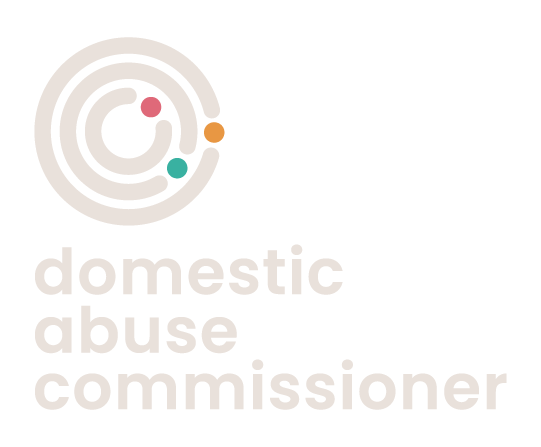Guest blog by Frank Mullane, CEO of AAFDA
Please note that this blog includes descriptions of the Domestic Homicide Review process following the death of a person due to domestic abuse. This may be distressing. A list of resources can be found here.
The role of Domestic Homicide Reviews (DHRs) is to illuminate the past to make the future safer. Usually, statutory and voluntary agencies know some of this past. Families, friends and communities often know so much more.
I have read approximately 1200 DHRs, most of those for the Home Office as part of the quality assurance process. This work has shown me that good reviews are always situated in the community where fatal domestic abuse is committed.
DHRs became law in 2011 and now domestic abuse is higher on the agenda than ever before. Before DHRs, there was no detailed recorded history of domestic homicides and suicides and certainly none from the victim’s perspective. The record from the trial was formed by the perpetrator under cross examination from the State and there was no lawyer representing the family. The inquest often focused only on the events of the day of death. DHRs re-balance that narrative with critical missing information.
DHRs reveal the horrific and compromised lives of so many, usually, women. They shine a bright light on the antecedents, giving us all a chance to make the future safer. And they act as pressure loops feeding back into agencies to ensure continuous improvement to prevent further abuse.
As best we can, it is important to walk along the life of the victim to record what happened and to seek help to try to build what their perspective was. The family and friends unveil a store of information, sometimes intensely personal, to help us do this. They may allow reviewers to see the deceased’s diaries. They may share conversations which help us understand risk; or what thoughts the victim had of their chances of staying alive. They may source records which agencies did not find.
One family member wrote to me saying: “You are the voice of the dead person and you have a huge responsibility to ensure their story is recorded correctly…After having read certain reports, I imagined my sister shouting ‘No, no, that’s not how it was. You need to get this right.’ Accuracy and truth are incredibly important.”
Family and friends may describe events in ways which give reviewers a completely new perspective compared to descriptions of the same event by others. They may reveal important interactions with agencies and other community members, perhaps a priest, a doctor, an employer. We can check if these people know how to help victims, and if not, reviewers can offer advice.
Some agencies may report no contact with the victim, but the family and friends may know of a contact the victim made anonymously. Information from friends may differ and even conflict with information from families. Agencies need all these perspectives so that they can create services that genuinely meet victims’ needs.
Twelve years ago Baroness Casey found when she was Victims’ Commissioner, that “the passage through the system is often cited as being as traumatic as the bereavement itself.” Who would speculate that this is not still true? Casey was talking about the criminal justice system, but some may say the same when involved in a poorly managed DHR. There are many brilliant and kind professionals operating the system, but its configuration often compromises them too.
At AAFDA, we raise the status of families in their interactions with agencies after fatal domestic abuse. We help them to assist the review and help protect them from secondary trauma. As one family member told us: “after the death, it’s almost like you’re on another traumatic journey. There is no respite from it. And people just sit on the outside, they go, well it’s nearly two years now. They just don’t get it. They don’t realise what comes next.”[1]
In 2016 we influenced the Home Office to amend the Statutory Guidance for DHRs so that families were given the opportunity to be integral to reviews and not just involved. We established a seven-step process to help families be integral to DHRs. This includes access to an expert advocate, the ability to contribute in the medium they prefer, involvement in the scope of the DHR, meeting the DHR panel and receiving regular updates. Importantly, the process now enables the family to review the draft DHR report in private and with plenty of time – and ensures they are given the opportunity to be involved in creating change after the review, so that the lessons of their loved one’s death are learned.
So many families have shared that active and supported participation makes the experience constructive. It also helps the reviewers and protects the family from secondary trauma. In DHRs, we focus not on blame but on emancipating professionals to reveal truths about the way that agencies were operating.
The theme of this year’s 16 Days of Activism against gender-based violence is invest to prevent abuse. A good Domestic Homicide Review has prevention at its heart: raising the status of both the deceased by telling an accurate story, and of current and future victims by improving service provision.
Frank Mullane is the CEO of AAFDA, and an Honorary Fellow of the University of Gloucestershire. Operating in England and Wales, AAFDA is a centre of excellence for reviews after fatal domestic abuse. It provides specialist advocacy and peer support for the families bereaved in this way. AAFDA also delivers training for professionals and helps develop review methodology nationally and internationally. https://aafda.org.uk/
[1]https://aafda.org.uk/storage/News%20items/999369%20Law_Domestic%20Violence%20Executive%20Summary%20Research%20Report_Final%20FINAL%20PRE-PRINT.pdf

